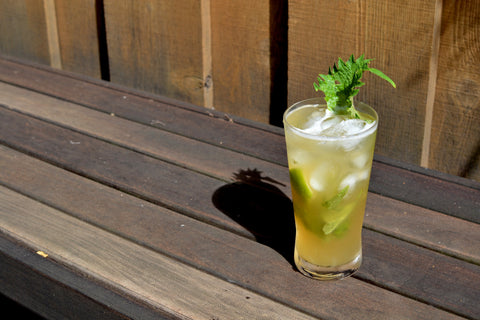
Pulling out balled-up leftover cheeses and one-cup sakes from my fridge is my weeknight, wind-down, go-to ritual after work. Even though some cheeses pair better with certain types of sake, I love nibbling on cheeses with whatever sakes happen to be rolling around in my fridge. After many nights of these pairings, I can confirm that sake and cheese are complementary indeed.
Why do sakes and cheeses pair so well? Two words: lactic acid. Both cheese and sake-making involve lactic acid. When making cheese, bacteria is introduced into a warm milk setting. The bacteria then produce lactic acid as they metabolize. When making sake, brewers either add lactic acid to yeast starters in order to kill the unwanted elements (like wild yeast and bacteria) or produce it naturally by combining steamed sake rice, koji, and water and letting it develop over time (this occurs in both kimoto and yamahai sake-making, and adds about two weeks to the production process). Because both cheese and sake-making involve lactic acid, consuming them together exhibits symbiosis on the palette. When paired correctly, the flavors melt into each other to create a flavor symphony.
Kimotos and yamahai sakes are perfect candidates for cheese pairings because of the distinct lactic acid component, which creates a rich, earthy and yogurty flavor profile. I love having kimoto and yamahais with cheese and have included a yamahai in Level 1 and a kimoto in Level 2. I hope you share my enthusiasm in marrying two umami-filled consumables together. I encourage you to experiment beyond the suggestions I have here.
Kanpai,
Yoko
LEVEL 1: Introductory Membership (Two 300ml bottles)
 Asabiraki Suijin Junmai
Asabiraki Suijin JunmaiAsabiraki Shuzo (Iwate, Japan)
Seimaibuai: 70%, SMV: +10
I wanted to start off Level 1 with a dry sake, with pronounced acidity, that would pair well with goat cheese. This junmai has sweet, grainy nose that is a prelude to the ricey, umami flavor upon entry. It finishes bold and dry. I recommend having this sake at room temperature or slightly warmed when pairing with a plain, clean, tart chevre.
 Tamano Hikari Junmai Ginjo Yamahai
Tamano Hikari Junmai Ginjo Yamahai
Tamanohikari Shuzo (Kyoto, Japan)
Seimaibuai: 60%, SMV: +1
This yamahai has a rich aroma full of caramel and pineapples. Its unique flavor starts fruity and sweet (most likely the ginjo) and finishes long with funk and toastiness (probably the yamahai). The high acidity and mushroomy aroma makes a perfect pair with a nutty, earthy cheese like gruyere or aged cheddar cheese. It’s rare to see a junmai ginjo made in the yamahai style – this sake makes me want to try more from different breweries. If you’d like to sip this sake alone, try it chilled. When pairing with cheese, I’d suggest enjoying it at room temperature.
LEVEL 2: Premium Membership (Two 720ml bottles)
 Daishichi Kimoto Honjozo
Daishichi Kimoto HonjozoDaishichi Sake Brewery (Fukushima, Japan)
Seimaibuai: 69%, SMV: +1
Pairing this sake with a cheese was surprisingly challenging. My first hunch was a smoked mozerella, but both the sake and smoked cheese tasted mute. Noticing the cherries in the nose and the general sweetness of this kimoto, I tried a few saltier cheeses. A pungeant, salty Roquefort proved to be the winner! Enjoy this sake chilled with your favorite blue! Daishichi Sake Brewery, located in Fukushima, makes kimoto sakes exclusively.
 Nyukon “Into Your Soul” Tokubetsu Honjozo
Nyukon “Into Your Soul” Tokubetsu Honjozo
Musashino Shuzo (Niigata, Japan)
Seimaibuai: 60%, SMV: +3
This tokubetsu (special) honjozo from Musashino Shuzo showcases the creamy nuttiness of lactic acid with a slightly nose full of apricots. Although honjozos are often very crisp and clean, this honjozo has a wide, rich mouthfeel reminiscent of almonds and whipped cream. Both the brewer and Umami Mart staff agree that this sake pairs best at room temperature with a creamy, fresh mozzarella or a soft triple cream cheese like Brillat-Savarin.




Comments (0)
There are no comments for this article. Be the first one to leave a message!